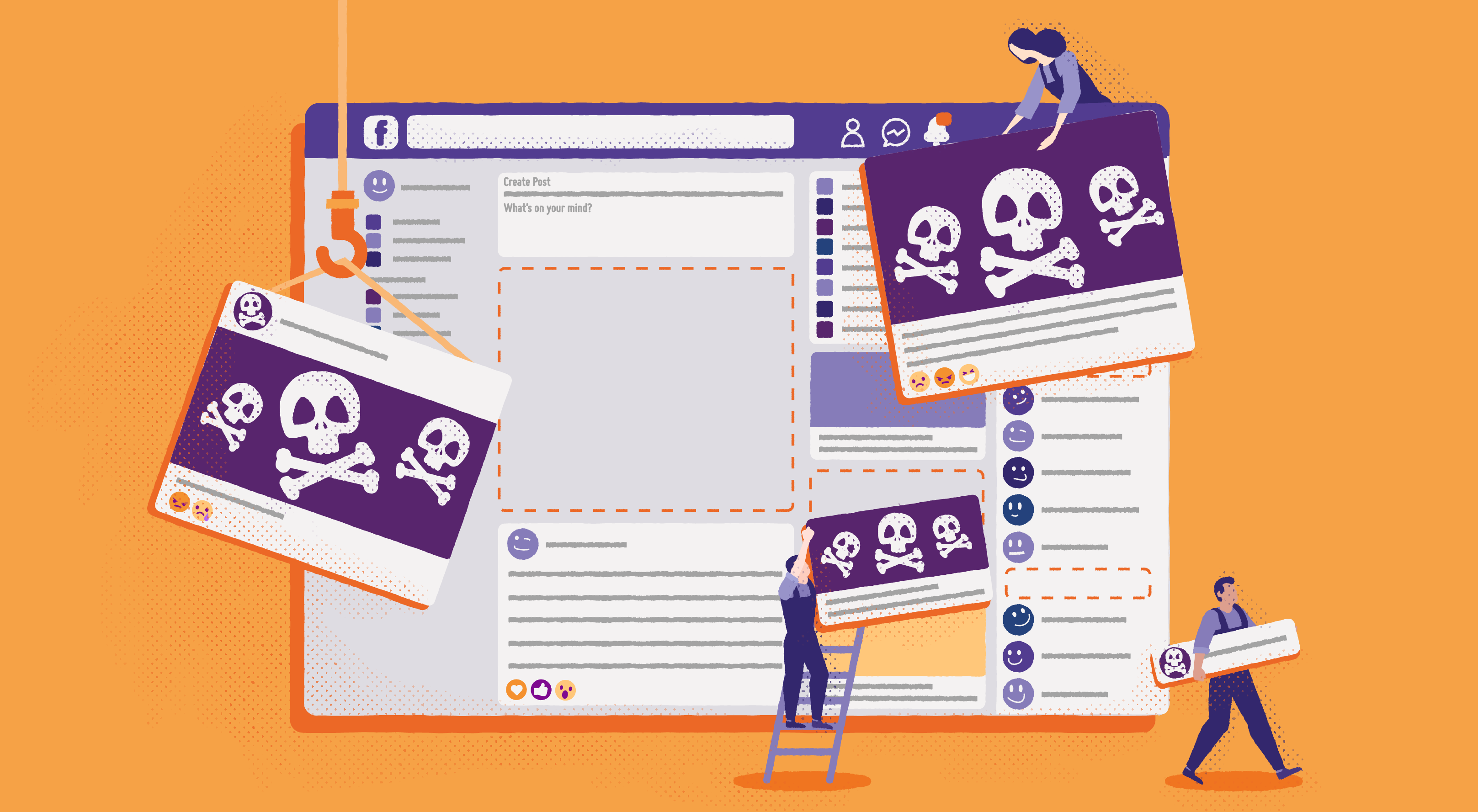
Since its launch on the platform, Facebook Marketplace has been generating enormous traffic and promises to continue to be a strong competitor to sites like eBay. So it’s natural to be concerned that fraudulent or deceptive advertising posted on Facebook might harm your brand.
That’s why we offer a guide for removing those bogus ads and the profiles that host them, to help you protect your image and the quality of your products on that popular network.
How can I find illicit advertisements on Marketplace?
The tool is available on the Facebook platform itself, and is easily found.
Such ads can be exposed via searches, using the following filters:
Region
Classified ads are shown by geolocation, so it’s always important to remain vigilant against a wide range of possibilities.
Category
There are too many categories to count! What if someone is trying to hide a certain product in a category other than the real one? We need to check everything!
Prices
Try not to limit your search in this filter, because you might let something slip by.
Does Facebook endorse fraud?
First, we must understand the platform’s Community Standards and Commerce Policies, which give us the basis for a successful complaint.
But you should know up front that if you uncover an ad that infringes on your trademark or copyright, you are protected by the section’s terms of use, and can take steps to file a complaint.
How can I remove infringing classified ads from Marketplace?
The platform has a complaint form for you to report violations infringing on your trademark. In it, you can provide the URLs of the ads or sellers that are in violation.
Want to know how it works? Here's a step-by-step process:
Right away, you will be informed of the risks in filing an erroneous or false complaint. Once that’s understood, you can continue by providing your data:
- Who owns the trademark? Clearly state on the form if the trademark belongs to you, your company, your client or to another individual.
- Your name or that of the company represented
- Your position
- Contact data: email, address and phone
- Trademark holder’s name
- Official link to your digital presence (site or official page on networks)
A portion of the data collected for the complaint will be forwarded to the offending advertiser. To protect your privacy, always use your brand’s institutional data, such as its legal and commercial contact information.
For the complaint to be substantive, the form will also request trademark information. Therefore, have available:
- The trademark registration
- Where the trademark is registered
- The category of the trademark’s goods or services
- A direct URL link to the trademark’s registration (if available)
- Attachments (copy of the trademark’s registration certificate)
If more than one of your trademarks is being infringed, the others may be included on the same form. Just select the box “I have additional brands” and fill in the data. Once you’ve completed the identification process, you will provide information regarding the content that is the subject of the complaint.
Since our goal is to remove bogus classifieds from Marketplace, you may opt to file a complaint about the classified ad or the seller’s profile, which will be among the first options:
- Photo, video or publication
- A page, group or an entire profile
Directly below that, you can add additional pertinent details to the complaint.
Last but not least, you will be declaring, under penalties of perjury, that the contact information is true and that you are the holder of the trademark or an agent authorized to file the complaints.
Once the complaint has been filed, Facebook will analyze your arguments and may decide to remove the classified ad or even close the offending account.
To protect your brand from counterfeit products and unauthorized sales, we at Axur offer Takedown Solution—a service that detects and removes fraudulent listings across marketplaces, social media, and other online platforms. With it, you can prioritize threats, automate takedown requests, and rely on our AI-driven monitoring to safeguard your reputation.
Rest assured, our solution works continuously to eliminate infringing content, helping you maintain brand integrity with fast and efficient enforcement. Learn more about our Takedown Solution.
Discover Polaris, Axur's New AI Solution for Cybersecurity
Polaris, our advanced cyber intelligence platform, empowers security teams with AI-driven insights and accurate alerts mapped directly to your unique attack surface. By providing real-time visibility into global threats, Polaris reveals hidden patterns and emerging risks to keep you ahead of the game. Want to see how Polaris can revolutionize your cybersecurity approach? Discover the proactive power of Cyber Threat Intelligence today.

Multimedia Production student and member of Axur's Brand Protection team, I help to build a safer internet.















